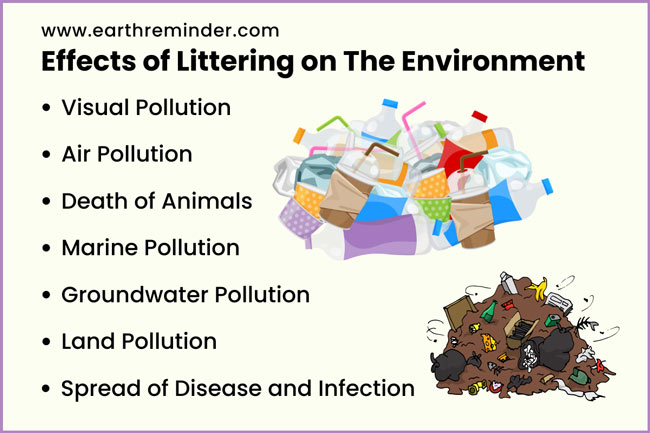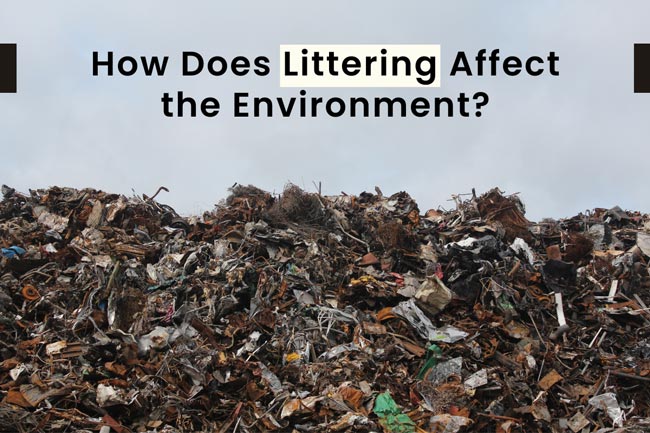What Littering Can Do To The Environment

Understanding HVAC Systems: A Buyer's Guide for Optimal Home Comfort
Choosing the right HVAC (Heating, Ventilation, and Air Conditioning) system is a crucial decision for homeowners, real estate investors, and even contractors. A well-chosen system can significantly impact energy bills, indoor air quality, and overall comfort. This guide provides a comprehensive overview of different HVAC options, comparing popular brands and models, and explaining key metrics like AFUE, SEER, and HSPF.
Types of HVAC Systems: A Quick Overview
Before diving into specific brands and models, it's essential to understand the different types of HVAC systems available:
- Central Air Conditioning: This is the most common type, utilizing a split system with an outdoor condenser unit and an indoor evaporator coil typically integrated with a furnace.
- Heat Pumps: Heat pumps offer both heating and cooling by transferring heat either into or out of the home. They are generally more energy-efficient than traditional furnaces and air conditioners, especially in moderate climates.
- Furnaces: Furnaces burn fuel (natural gas, propane, or oil) to generate heat. They are typically paired with a separate air conditioning system for cooling.
- Ductless Mini-Split Systems: These systems offer individual zone control, making them ideal for additions, sunrooms, or homes without existing ductwork.
- Packaged HVAC Systems: These combine all components into a single outdoor unit, suitable for homes with limited indoor space.
Key Metrics to Consider: AFUE, SEER, and HSPF
When comparing HVAC systems, three key metrics are crucial for understanding energy efficiency:
- AFUE (Annual Fuel Utilization Efficiency): This rating applies to furnaces and indicates how efficiently the furnace converts fuel into usable heat. A higher AFUE rating means lower energy bills. Modern furnaces often have AFUE ratings ranging from 80% to over 95%.
- SEER (Seasonal Energy Efficiency Ratio): This rating applies to air conditioners and heat pumps (in cooling mode) and measures cooling efficiency. A higher SEER rating translates to lower cooling costs. Current federal regulations require a minimum SEER rating of 14 in most regions. Some high-efficiency models boast SEER ratings of 20 or higher.
- HSPF (Heating Seasonal Performance Factor): This rating applies to heat pumps (in heating mode) and measures heating efficiency. A higher HSPF rating indicates greater heating efficiency. Look for HSPF ratings of 8 or higher for significant energy savings.
Important Note: Always consider the climate you live in when evaluating these ratings. For example, a high-SEER air conditioner might be a worthwhile investment in a hot climate, while a high-HSPF heat pump could be more beneficial in a region with mild winters.
Comparing Popular HVAC Brands and Models
The HVAC market offers a wide range of brands and models, each with its own strengths and weaknesses. Here's a comparison of some popular options:
Carrier
Carrier is a well-established brand known for its innovation and high-quality products. Their Infinity series is particularly noteworthy for its advanced features and energy efficiency.
- Pros: Excellent energy efficiency (high SEER and AFUE ratings), advanced features like smart thermostats and zoning controls, durable construction.
- Cons: Higher upfront cost compared to some other brands.
- Example Model: Carrier Infinity 26 Air Conditioner (Up to 26 SEER)
- Example Model: Carrier Infinity 98 Furnace (Up to 98.5% AFUE)
Warranty: Typically offers a 10-year parts warranty with registration.
Trane
Trane is another leading brand recognized for its reliability and performance. Their XV series is known for its variable-speed technology, which provides consistent comfort and energy savings.
- Pros: Durable and reliable, variable-speed technology for enhanced comfort, wide range of models to choose from.
- Cons: Can be noisier than some other brands.
- Example Model: Trane XV20i Air Conditioner (Up to 20 SEER)
- Example Model: Trane S9V2 Furnace (Up to 97% AFUE)
Warranty: Typically offers a 10-year parts warranty with registration.
Lennox
Lennox is known for its premium HVAC systems and innovative technology. Their Signature Collection offers some of the most energy-efficient options on the market.
- Pros: High energy efficiency, quiet operation, advanced features like solar-ready options.
- Cons: Higher upfront cost, potentially more expensive repairs.
- Example Model: Lennox SL280V Furnace (Up to 80% AFUE)
Warranty: Typically offers a 10-year parts warranty with registration.
Goodman
Goodman offers a more budget-friendly option without sacrificing essential features. They are a popular choice for homeowners looking for a reliable system at a lower price point.
- Pros: Lower upfront cost, reliable performance, readily available parts.
- Cons: Lower energy efficiency compared to premium brands, fewer advanced features.
- Example Model: Goodman GSX16 Air Conditioner (Up to 16 SEER)
- Example Model: Goodman GM95 Furnace (Up to 95% AFUE)
Warranty: Typically offers a 10-year parts warranty.
Rheem
Rheem is a well-respected brand known for its innovative features and focus on user-friendly technology. They offer a wide range of products, including high-efficiency heat pumps and tankless water heaters.
- Pros: User-friendly technology, wide range of products, competitive pricing.
- Cons: May not be as widely available as some other brands.
- Example Model: Rheem Prestige Series RP20 Air Conditioner (Up to 20 SEER)
Warranty: Typically offers a 10-year parts warranty with registration.
Factors Affecting HVAC System Costs
The cost of an HVAC system can vary significantly depending on several factors:
- System Type: Heat pumps, ductless mini-splits, and high-efficiency furnaces typically cost more than standard air conditioners and furnaces.
- Brand and Model: Premium brands and models with advanced features command a higher price.
- Installation Costs: Installation costs can vary depending on the complexity of the job, the location of the home, and the contractor's rates.
- Ductwork: If new ductwork is required, this can significantly increase the overall cost.
- Permits and Inspections: Local permits and inspections can add to the total expense.
Pricing Considerations: While upfront cost is important, remember to factor in long-term energy savings and potential rebates or tax credits when making your decision. Investing in a more efficient system can often pay for itself over time.
HVAC System Maintenance: Ensuring Longevity and Performance
Regular maintenance is crucial for ensuring the longevity and optimal performance of your HVAC system. Here are some essential maintenance tasks:
- Filter Replacement: Replace air filters regularly (typically every 1-3 months) to maintain airflow and prevent dust and debris from damaging the system.
- Coil Cleaning: Clean the evaporator and condenser coils annually to remove dirt and debris that can reduce efficiency.
- Duct Cleaning: Consider professional duct cleaning every few years to remove dust, allergens, and other contaminants.
- Professional Tune-Up: Schedule an annual professional tune-up to inspect and maintain all system components, including checking refrigerant levels, lubricating moving parts, and testing electrical connections.
Maintenance Benefits: Regular maintenance can improve energy efficiency, extend the lifespan of your system, prevent costly repairs, and improve indoor air quality.
Warranty Information and Considerations
Most HVAC manufacturers offer warranties on their products. It's essential to understand the terms and conditions of the warranty before making a purchase.
- Parts Warranty: Covers the cost of replacement parts in case of failure. Typically ranges from 5 to 10 years, with longer warranties often requiring registration.
- Compressor Warranty: Covers the cost of replacing the compressor, which is the most expensive component of an air conditioner or heat pump. Typically longer than the parts warranty.
- Labor Warranty: Covers the cost of labor for repairs. Often shorter than the parts warranty or may not be included.
Warranty Tips: Register your HVAC system promptly after installation to ensure full warranty coverage. Keep records of all maintenance and repairs to facilitate warranty claims if needed.
Choosing the Right Contractor
Selecting a reputable and experienced HVAC contractor is just as important as choosing the right system. Here are some tips for finding a qualified contractor:
- Check Licensing and Insurance: Verify that the contractor is properly licensed and insured.
- Get Multiple Quotes: Obtain quotes from several contractors to compare pricing and services.
- Read Reviews and Testimonials: Check online reviews and ask for references to assess the contractor's reputation.
- Ask About Experience: Inquire about the contractor's experience with installing and servicing the specific type of system you are considering.
- Verify Certifications: Look for contractors who are certified by organizations such as NATE (North American Technician Excellence).
Contractor Considerations: A qualified contractor can help you select the right system for your needs, install it properly, and provide ongoing maintenance and repair services.
Making an Informed Decision
Choosing an HVAC system is a significant investment. By understanding the different types of systems, key metrics like AFUE, SEER, and HSPF, and the factors that affect costs, you can make an informed decision that will provide years of comfortable and efficient heating and cooling.
Remember to prioritize energy efficiency, consider your climate, and choose a reputable contractor to ensure a successful installation and long-lasting performance. Take the time to research different brands and models, compare warranties, and ask questions to find the perfect HVAC solution for your home or property.










